Leopard geckos, known for their reputation as living statues, often sit motionless, presenting a cute and confusing spectacle. This behaviour, especially digging, might leave owners wondering why these otherwise lizards enjoy such activities.
In many cases, digging can be a sign of stress or poor husbandry. However, it’s essential to observe the context and look for other clues to understand their actions fully. For example, females that have mated might dig to build a den for laying eggs, acting on an instinct. This activity is not just a quirky habit; it’s often a result of their natural behaviours in the wild.
As a Leo owner, my experience has shown that creating a comfortable environment that mimics their natural habitat reduces unnecessary stress and promotes healthy behaviours.
Table of Contents
Reasons Why Is My Leopard Gecko Digging
As a seasoned exotic pet owner, I’ve learned to interpret the natural behaviour of my Leopard Geckos. When they start digging, it’s easy to feel a pang of anxiety, wondering if these cute creatures are in distress. But fear not! Digging is often not a cause for alarm.
These reptiles may dig out of boredom, stress, or defensiveness, signalling their unique needs. It’s crucial for us, as responsible pet owners, to assist and make necessary changes in their habitat. This could be as simple as enriching their environment or adjusting temperatures to prevent potential health conditions. Understanding these behaviours helps us ensure our scaly friends are thriving, not just surviving.
Let’s delve deeper into the various reasons why a leopard gecko might engage in digging behaviour.
Reason 1: To Create A Den
Leopard geckos, hailing from the deserts of Asia and the Middle East, have an instinct for digging and finding hiding spots. This behaviour is normal; in their natural habitat, these geckos often travel underground, like moles, to find a secure location to nap or hide from predators. Their native terrain consists of plenty of hard sand, allowing them to burrow effectively.
In captivity, digging can be a sign they are trying to create a comfortable, clear space. When I added my spin to my gecko’s enclosure, which includes a den and hides both on the warm and cool side, I noticed they seemed happier and more content.
Digging in leopard geckos isn’t necessarily a problem, but seeing a lot of them should make one make sure there are plenty of hiding spots available.
If your gecko decides to find a new spot from time to time, it’s likely just them acting normal. However, if they start to seem scared or stressed, approach this by offering a type of hide they prefer, perhaps something more enclosed or hidden. This might mean they want to crawl into a nook and relax. It’s essential to take time to help them feel secure and work on building a bond to prevent stress. Providing a softer, easier-to-dig substrate can also address any issue they might have with their environment.
Also Read: ARE LEOPARD GECKOS SMART OR DUMB
Reason 2: To Keep Cool
Leopard geckos and bearded dragons, along with other reptiles or herps, often resort to digging as a natural response to hot temperatures. This technique to reach the cooler ground is not unique to them; even mammals like dogs exhibit similar behaviours.
In their rocky desert habitats, where days can be scorchingly hot, these creatures appreciate the sun but also need to regulate their body temperature. The shade of the dirt or baking under the sun reveals their instinct to find a small and cool pet haven.
In captivity, ensuring your Leo’s enclosure has a substrate that is deep enough for digging, while also working with their instinct, is crucial. Avoiding undiggable substrates like artificial grass and providing a gradient from a warm side (80-85°F) to a cool side (75-80°F) allows them access to best practices for temperature regulation.
Tip: In cases where you suspect a temperature problem, it’s vital to carefully monitor the conditions of your reptile room or the area with direct sunlight. Creating a designated and consistent environment, and monitoring it throughout the day, helps to rule out other issues.
My experience in managing a reptile enclosure taught me the importance of this best practice. If your leopard gecko is digging frequently, it might be an explanation for their need to cool down or escape from too much heat. Remember, understanding their reasoning and responding with suitable habitat modifications is key to their well-being.
Reason 3: Leo is shedding / Moist Hides
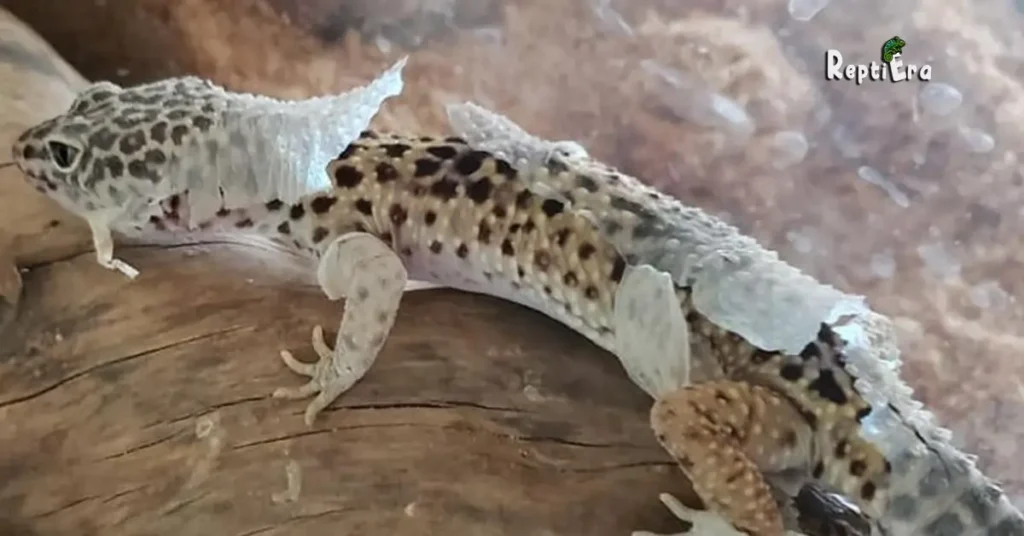
When your Leopard Gecko begins to dig in its enclosure, it’s often a sign of stress or frustration, especially if it’s shedding. Shedding can be a tough battle for them. If they are uncomfortable and unable to shed correctly, it might be due to the wrong temperature or conditions in their habitat. This struggle can lead them to lose their appetite and become ill, with their colouration turning duller or greyish-white. It’s likely the cause is a lack of appropriate moist hides.
To help your gecko, ensure their enclosure has moist hides. These are essential during the shedding process. You can increase humidity by spraying water inside the hides. Remember, although leopard geckos are desert creatures by nature, they still need a moist spot to aid in shedding. Consider adding a shedding box or a rock cave. These can be reptile-approved ornaments like a replica dinosaur skull, adding a fun element to reptile habitats. For example, place these hideouts at the centre of the tank, ensuring it’s not too hot and not too cold, so your gecko can comfortably use them.
Reason 4: Looking For Food
Leopard geckos are primarily insect-eaters and good hunters both in the wild and in captivity. Their quest to find food often includes digging, especially for worms and other bugs. This instinct is alive and well even when their meals aren’t hiding in the substrate.
From personal experience, I’ve observed that leopard geckos will sometimes eat some substrate along with their meal, but usually, there’s no harm in them digging around for food. It’s a good idea to ensure that the substrate does not hide the food or contribute to impaction, and as long as the leo’s don’t eat the substrate in the process, it’s actually a good form of enrichment.
When it comes to leopard geckos and their burrowing for meals, it’s important to make sure not to encourage them to associate food with the substrate. While digging can be part of their instinct to work for their food, in captivity, we need to find a balance. This means offering food in a way that doesn’t lead them to think every burrow might hold a meal.
Doing so helps maintain their natural behaviours without risking any health issues related to accidental substrate ingestion. As a pet owner, understanding and managing these aspects of leopard gecko care can be both fascinating and rewarding.
Related Post: HOW MUCH TO FEED LEOPARD GECKO
Reason 5: Your Leopard Gecko Is Ready To Lay Eggs
Frantic and frequent digging in female leopard geckos can be a clear sign that they are gravid, meaning pregnant and ready to lay eggs. This might come as a surprise to owners who have kept their gecko alone, never having met or mated with a male.
Similar to chickens and other reptiles, leopard geckos can lay infertile eggs, which is not a rare occurrence. If you’ve noticed this behaviour in your enclosure over a week, it’s wise to start checking for eggs. Leopard geckos reach sexual maturity at around 18 to 24 months and a weight of about 35 grams. When this reproductive phase kicks in, their instincts take priority. As a keeper, I’ve reported seeing this behaviour more in females than in males.
During the mating season, typically spanning from April to August, female leopard geckos exhibit unique behaviours. It’s likely that your female gecko is trying to dig a nest to lay eggs. Interestingly, these geckos can lay several pairs of eggs in a season, sometimes even without male fertilization. If eggs are laid, it’s a telltale sign of her reproductive cycle. To identify if she’s ready to lay eggs, look for a pink hue on her lower abdomen. This colour change indicates egg development.
It’s essential to provide an appropriate moist hide as a suitable spot for egg-laying, as the process can be stressful for your gecko. The correct substrate gives the best chance for egg survival and helps to prevent your gecko from becoming egg-bound or overly stressed.
Tip: Experts recommend adding substrates like vermiculite, coconut soil, or bedding such as sphagnum moss. These materials, along with misting, help keep the egg-laying area moist—not wet—mimicking the fresh earth of their natural environment. This practice not only supports the health of your gecko but also contributes to a successful egg-laying process.
Reason 6: Stress and Fear
Assuming your leopard geckos are sharing an enclosure with different species, their digging behaviour might stem from fear of perceived predators or stressors in their environment. In the wild, these reptiles often hide to avoid danger, and in captivity, excessive digging can be a sign they are trying to find a safer spot. This instinctual defence mechanism, aimed at dodging potential threats, leads them to assume a fear-driven response.
Signs of stress in leopard geckos, such as loss of appetite or spending extended time hiding, should prompt a reevaluation of their living conditions. This assumption encourages us to identify and mitigate various stressors. Factors such as a change in the enclosure or irritation from external sources are critical to consider.
Additionally, discomfort caused by the wrong substrate can be bothersome, leading to hurting their delicate bodies. Suffering from impaction caused by ingesting loose substrate is a serious concern. Being mindful in selecting an appropriate substrate is essential; paper towels, newspaper, reptile carpets, and smooth stones are safe options, unlike sand, which can be abrasive to their skin.
Reason 7: Leo is hiding / Escaping Predators
When a Leopard Gecko feels threatened or perceived a threat, either inside or outside their enclosure, they often dig and hide to protect themselves. This behaviour is a natural response to unnecessary stress, often caused by predators or perceived dangers. In a home setting, these predators can be anything from young children who reach their hands into the tank, to other family members who might not know how to handle them properly. This can make your gecko nervous and prompt them to seek safety.
To alleviate this, it’s important to Provide plenty of hides in their enclosure and educate visitors and family members on how to handle Leo appropriately. If your gecko is attempting to dig away from pets, loud noises, or other factors that startle them, it’s crucial to ensure they are not being bullied or larger pets are not causing them distress.
Monitor their behaviour to pinpoint the cause of changes in their environment. Signs like tail waving, eating less, or digging excessively are indicators that your gecko is feeling threatened or uncomfortable.
Make sure you have an adequate number of hides
If your Leopard Gecko is constantly digging, there’s a chance they don’t have enough hides in their tank. This behaviour can often be a sign that they feel too exposed to their environment. In the wild, these creatures seek out secluded spots for security and comfort. When their enclosure does not have enough secure hiding places, they might attempt to create their own by digging.
To address this, either buy more hides or make them yourself. Adding more hides provides your pet with a sense of safety and can reduce stress-induced behaviours like excessive digging. As a gecko enthusiast, I’ve seen firsthand how adding varied and ample hiding spots can greatly improve their sense of security and overall well-being.
(That being said, if you’re in need of a hide and you don’t know where to find a good one then I recommend you check out this one here on Amazon. It is the hide that I currently use in my tank my leopard gecko absolutely loves it.)
Leopard Geckos need exactly three hides to live comfortably in their habitat. If they don’t have these, they may resort to digging as a way to create their hiding spots.
As an owner, it’s essential to make sure you get the missing hides soon. This addition can encourage your gecko to stop digging and instead use these hides for rest and security. Providing the right number and type of hides not only enhances their living environment but also gives both you and your gecko peace of mind. In my experience with these fascinating creatures, meeting their basic needs like adequate hides significantly reduces stress-related behaviours and promotes a healthier, happier life for them.
Related Post: WHY IS MY LEOPARD GECKO ALWAYS HIDING
Reason 8: Confined space
Leopard Geckos often exhibit behaviours like digging and burrowing, which can be intriguing yet puzzling for their owners. This repetitive activity may signal that your gecko is stressed due to a lack of space to move around. These geckos need a sufficient area to run and exercise in order to stay healthy.
According to PETMD, the minimum size for a terrarium for a single gecko is 10 gallons (about 45 Liters). For a pair, a 15-gallon (approximately 68 Litre) tank is recommended, and for anything larger, a 20-gallon (90 Liter) or larger tank is advisable. It’s important to increase the enclosure size by approximately 5 gallons (38 litres) for each new gecko you add.
When setting up their habitat, ensure that your gecko can spend time on the ground in a long, relatively shallow space. This is best for their wellbeing. Be careful not to use inappropriate substrate or to overcrowd the area with accessories, as this can limit their ability to move freely. The space in their tank should never feel limited or confined.
As a gecko owner myself, I’ve observed that providing them with ample room not only reduces their digging behaviour but also contributes significantly to their overall health and happiness.
Reason 9: Instinct, Entertainment, and Boredom

There are plenty of good reasons why leopard geckos dig; in many cases, it’s a mixture of pure instinct and boredom that drives these little lizards. For Leos, whose ancestors have been digging through the dirt for millions of years, it’s a satisfying and natural activity. It’s fair to say that sometimes they are simply understimulated in their enclosures, lacking enrichment.
In turn, they find digging to be something to do. My own experience with leopard geckos has shown that when they are not engaged in activities they would naturally require, like hunting, finding hiding spots, or exploring, they might exhibit strange behaviours, including digging. To address this, enriching their enclosure, allowing them to hunt, and giving them areas to explore and climb provides much-needed mental stimulation and can stop unnecessary digging. It’s important for these curious creatures to enjoy their environment to the fullest.
So How Can I Provide Optimum Temperature
Maintaining the right temperature is critical for the well-being of your Leopard Gecko, and this often involves using the right equipment. Ensuring your equipment is up to date, including light bulbs and thermometers, is key. A heating pad is essential to provide a consistently warm area for these little guys, especially since they do not require bright light at night. Positioning their habitat in a room where there is natural daylight but not direct bright light during the day and a more subdued setting at night time is a good idea.
If your family has placed the gecko habitat in the corner of a family room, make sure it is away from cold drafts and windows, but still in a spot where it can get warm, indirect light. It’s crucial to have both hides and a heating pad in the tank to provide a warm resting place. A reptile light bulb, preferably a low-watt incandescent bulb, can provide the heat with your gecko desires. These bulbs, being White, are excellent for replicating daytime conditions.
Note: At night, a night bulb is essential; a ceramic heat bulb is perfect as it can produce heat without light, ensuring your gecko has no worries about bright light at night. Supplemental heat sources can be used in cold areas of the tank to keep your leos comfortable. Be mindful that ceramic bulbs can get hot, and in small habitats, there’s a risk of becoming overly hot. For habitats, 20 gallons or larger, supplemental heat might be best achieved with an infrared bulb, which provides warmth without the intense heat of ceramic bulbs.
Check Your Tank
The first thing to do when you see your gecko digging is to make sure everything in the tank is in order. Check if the temps are good, and ensure there are enough hides as they are needed to provide a stress-free environment. Confirm that your gecko is eating and drinking well, and if it has enough playtime each day. If these elements are not corrected, you might find it necessary to keep a schedule for a vet visit right away. Always watch your gecko and notice immediately any changes in its behaviour; this proactive approach can help identify and solve issues before they escalate.
Also Read: CAN LEOPARD GECKOS LIVE TOGETHER
Should You Worry?
Digging is something leopard geckos do naturally, and it’s not always a sign of lacking husbandry or a reason to worry.
Most of the time, it’s not a huge concern; however, if you see a lot of digging compared to their usual behaviour, or if it starts suddenly, it’s wise to double-check the basics. Signs of stress, such as not having enough hiding spots or the right locations for both the warm side and cold side of their enclosure, can contribute to this behaviour.
Ensure the overall temperature is correct, using a thermometer to keep these basics under control. If your gecko likes to dig and it’s not accompanied by changes in their behaviour, like lack of appetite, excessive weight loss, or glass swimming, then it’s generally not a concern. However, taking a close look and considering consulting a veterinarian if you’re unsure is always a good idea. Talking to a professional can provide peace of mind and ensure the health and happiness of your pet.
FAQs
Do leopard geckos prefer sand or dirt?
Leopard geckos often find soil with a hard consistency more natural than all-sand enclosures. In fact, pure sand is unnatural for them, making it the number one reason it’s not the best choice for a Leo’s tank.
Do leopard geckos prefer light or dark?
Leopard Geckos are crepuscular, being most active at dawn and dusk; their eyes are designed to navigate and hunt in dim hours of darkness. Adding a nighttime light source can interrupt their natural circadian rhythm and lead to stress.
Do leopard geckos dig and burrow?
It’s common for female Leopard Geckos to dig when they need to lay unfertilized eggs; however, burrowing can also be a reason for individual personality – some geckos enjoy burrowing, while others don’t, preferring activities like climbing instead.
Do leopard geckos eat dirt?
In the wild, dirt or soil can be a great source of calcium, minerals, and vitamin B for Leopard Geckos, but in captivity, if their diet is lacking, they might try to get these nutrients from the substrate placed in their enclosure.
Conclusion
When people first notice their leopard geckos digging, they often wonder why. Among the many normal behaviours exhibited by these reptiles, digging can be explained largely by their natural instincts to find food and comfortable shelter where they can feel safe and enjoy their surroundings. What explanation best explains this activity? It’s their inherent need to create an environment that mimics their natural habitat, where they can indulge in their love for burrowing and exploring. As a gecko enthusiast, I’ve observed this behaviour is not just a quirk but a fundamental aspect of their well-being, providing mental stimulation and a sense of security.
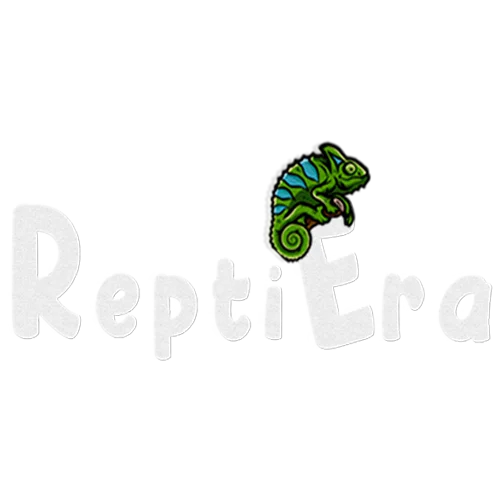
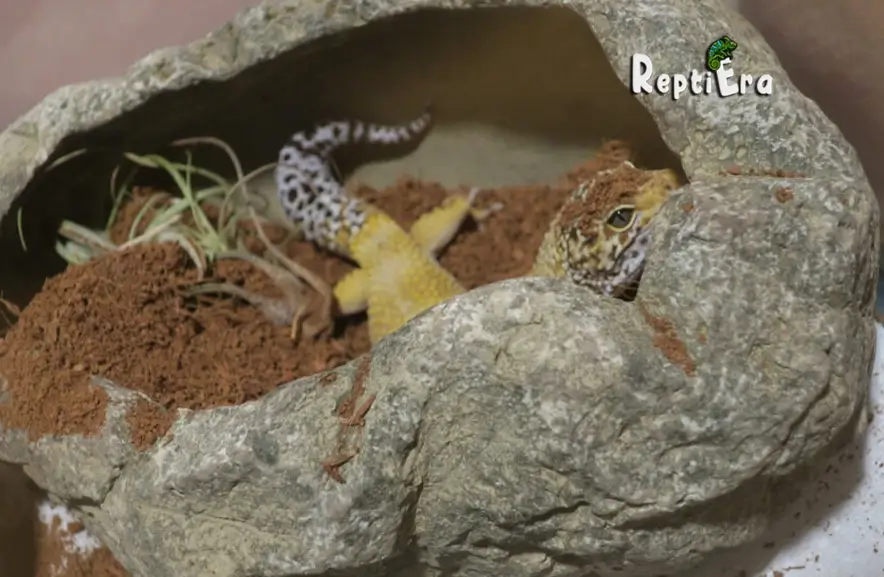
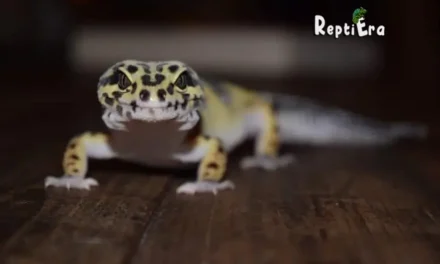
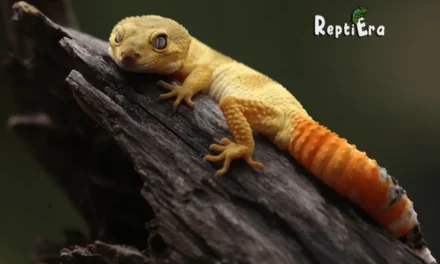
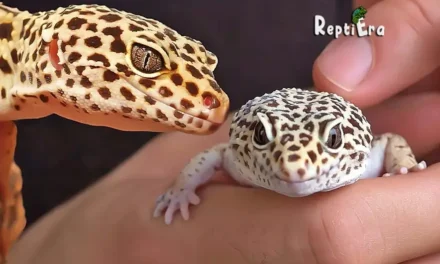
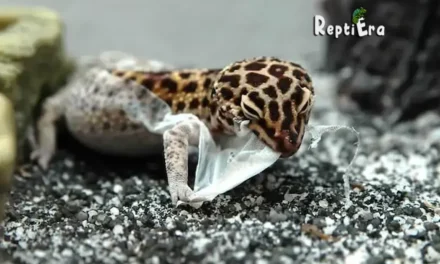
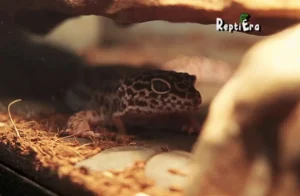
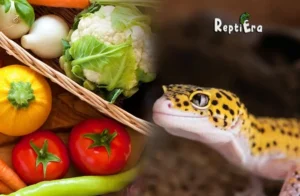
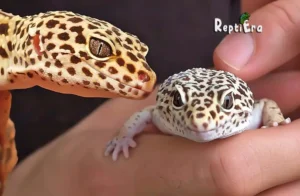
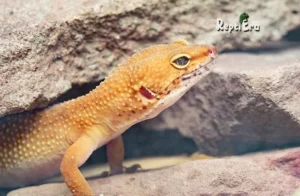
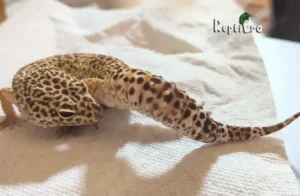
Your point of view caught my eye and was very interesting. Thanks. I have a question for you.